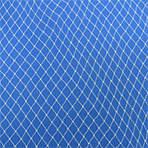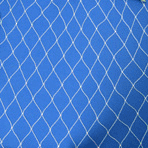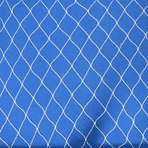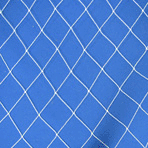
Multifilament Netting
A Multifilament Net is made of thin strands of filaments that are twisted or braided together like twine.
The multifilament nylon netting is used for many different applications including fishing nets, sports nets and industrial nets. Nylon multifilament nets are manufactured by twisting multiple strands of very fine filaments. This makes multifilament netting light and flexible yet strong and durable. This high quality nylon mesh net is woven from high quality, virgin resin, which provides superior tensile strength (breaking).These multifilament twisted nylon netting has been heat-set to ensure tight knots that won't slip under tension. A stringent quality control process ensures uniform mesh and twine sizes through all the netting. Another benefit is the ease of repairability.
Nets made from multifilament nylon have a higher visibility in clear water compared to monofilament nets. Nylon multifilament netting can be easily dyed for any color application. Multifilament netting will not float in water and will hold more debris (sticks, grass, etc.) than monofilament nets.
When ordering nets or nettings, be sure they are the mesh you need:
Square measure is one-half of stretch measure. Both square and stretched measurements in our catalog are based on standard method of measurement - from center of knot to center of knot.
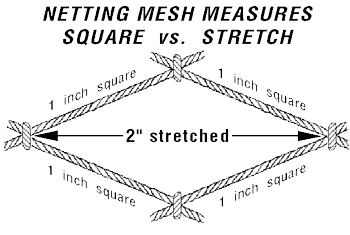
| TYPICAL BREAKING STRENGTHS | ||||||
|---|---|---|---|---|---|---|
| Here are some typical breaking strengths for multifilament nylon twines used in gill nettings. Because of the knots, netting strengths are lower than twine strengths. Also the netting strength is reduced when put into water. | ||||||
| Twine Size | Denier | Diameter ( mm.) | Twine | Netting | ||
| Dry | Wet | Dry | Wet | |||
| 104 | 840 | .38 | 13 lb | 12 lb | 8 lb | 7 lb |
| 139 | 1260 | .43 | 20 | 19 | 12 | 11 |
| 208 | 1890 | .55 | 28 | 27 | 18 | 16 |
| 277 | 2520 | .68 | 42 | 40 | 24 | 22 |

